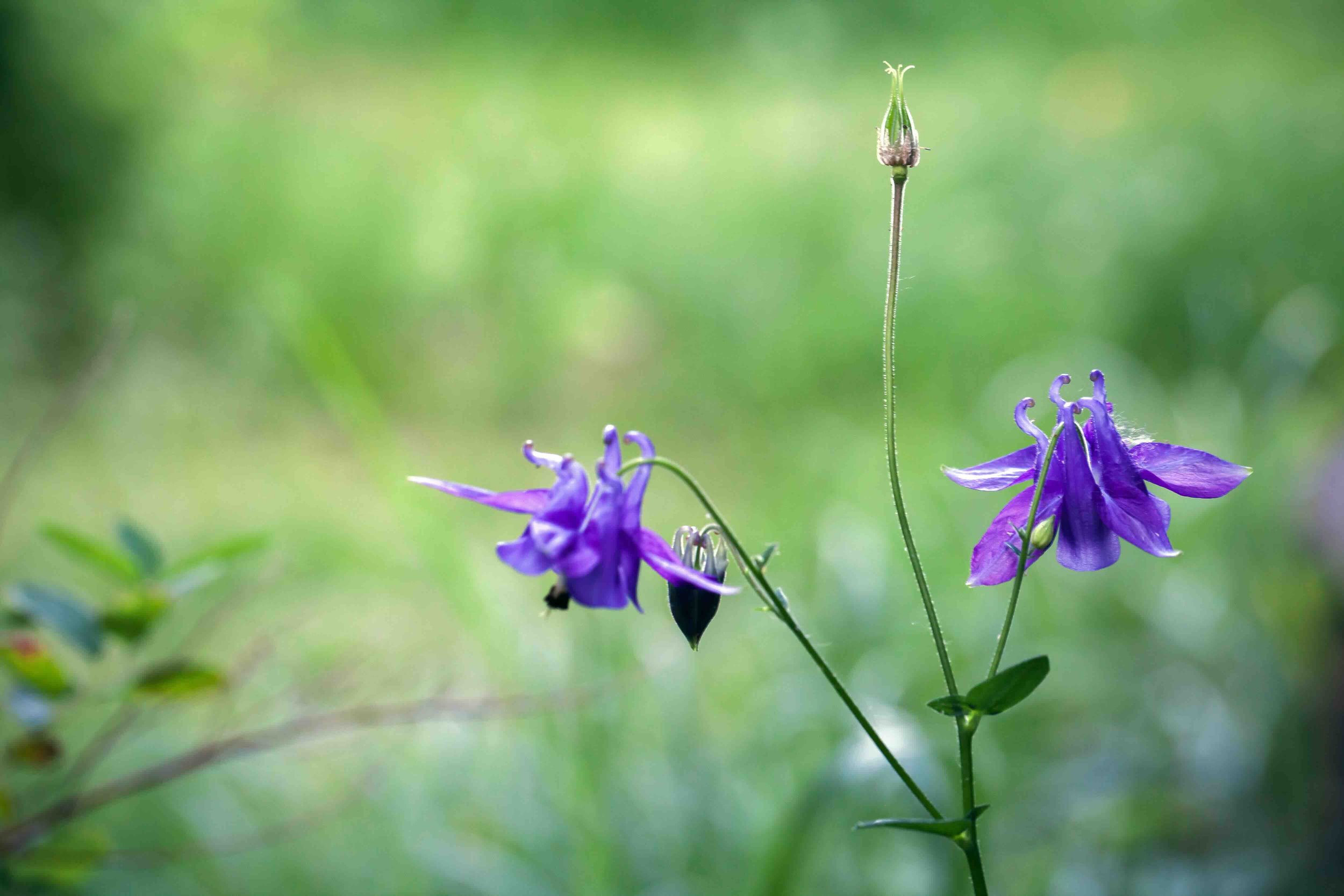
Columbine at the Shakespeare Garden
Aquilegea vulgaris
The name "columbine" comes from Latin words that describe the plant’s appearance: columba, meaning dove, and aquilegia, meaning eagle. The flower’s nectaries resemble a dove’s head, while its petals, when separated, can resemble an eagle’s talons. This connection to the dove gave columbine a symbolic, often religious, significance. It was also believed to be the lion’s favorite flower, sometimes referred to as herba leonis. In Shakespeare’s time, columbine was valued not only for its beauty but also for its medicinal properties.
In Hamlet, Ophelia suffers mistreatment from the men around her, and following the death of her father, she distributes symbolic flowers to various members of the court. Among these is columbine, which represented ingratitude, faithless lovers, and foolishness. Shakespeare’s audience would have been familiar with this symbolism, enhancing the emotional weight of the scene.
Columbine is a perennial that spreads by seed, typically living only two to three seasons. It blooms in early spring, attracting both hummingbirds and other pollinators. While it prefers moist but well-drained soil, it can tolerate full sun and is often used in borders or naturalized in meadow settings. Columbine is hardy in zones 3 through 8 and is deer resistant. Modern varieties come in a range of colors, including white, pink, red, purple, and lavender.
Shakespeare references to columbine:
-
Ophelia speaking:
There’s fennel for you and columbines
-
Armando, Dumain, and Longaville dialogue:
Armando: I am that flower
Dumain: That mint.
Longaville: That columbine.


